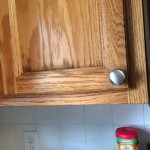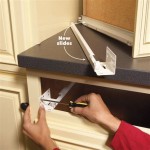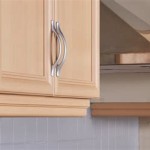How to Effectively Eradicate Moth Larvae from Your Kitchen
Discovering moth larvae in your kitchen can be both unsettling and frustrating. These tiny pests can contaminate food and cause damage to kitchen staples like flour, cereal, and grains. If you're dealing with a moth larvae infestation, it's crucial to act swiftly to prevent further spread and damage. Here are some essential steps to help you eliminate moth larvae from your kitchen effectively:
1. Identify the Source
The first step in eliminating moth larvae is to pinpoint their source. Inspect all food items in your kitchen, particularly those stored in pantries, cupboards, and drawers. Pay close attention to dry goods like flour, rice, cereals, and spices, as these are common hiding spots for moth larvae. Once you've identified the infested food items, discard them immediately in a sealed garbage bag.
2. Thoroughly Clean Your Kitchen
Once you've removed the infested food, it's time to deep clean your kitchen. Use a vacuum cleaner with a crevice tool attachment to thoroughly clean all surfaces, including floors, countertops, shelves, and drawers. Be sure to remove any food crumbs or debris that may attract moths. Wipe down surfaces with a damp cloth and a mild detergent solution to eliminate any remaining eggs or larvae.
3. Use Moth Traps
Moth traps can be an effective way to catch and eliminate adult moths, preventing them from laying more eggs. Place pheromone traps in areas where you've noticed moth activity. These traps emit a scent that attracts male moths, trapping them on a sticky surface. Regularly dispose of the traps once they're full.
4. Freeze Infested Items
If you have any non-perishable food items that have been infested but are otherwise undamaged, you can attempt to salvage them by freezing them. Place the infested items in a sealable freezer bag and freeze them for at least four days. The freezing temperatures will kill any moth larvae or eggs present.
5. Use Essential Oils
Certain essential oils, such as peppermint, tea tree, or lavender, have natural insect repellent properties. Diffuse these oils in your kitchen or apply them to cotton balls and place them in areas where you've seen moth activity. The strong scents can deter moths and help prevent re-infestation.
6. Store Food Properly
To prevent future moth infestations, it's essential to store food properly. Use airtight containers for all dry goods, such as flour, cereal, and grains. Glass jars or plastic containers with tight-fitting lids are ideal for this purpose. Regularly check your stored food for signs of infestation and discard any contaminated items.
7. Maintain Kitchen Hygiene
Maintaining good kitchen hygiene practices can help prevent moth infestations. Regularly clean up food spills and crumbs, and avoid leaving dirty dishes in the sink. Keep your kitchen dry and well-ventilated to create an environment that is less conducive to moth activity.
By following these steps, you can effectively eliminate moth larvae from your kitchen and prevent future infestations. Remember to be vigilant and inspect your food and kitchen regularly for signs of moth activity. With proper cleaning and storage practices, you can keep your kitchen pest-free and ensure the safety and quality of your food.

Everything To Know About Getting Rid Of Moths In Cupboard Spaces

Moth Larvae On Your Kitchen Ceiling Here S What To Do

How To Get Rid Of Moth Larvae In Your Home Identification Removal

How To Get Rid Of N Meal Moths 4 Easy Steps

13 Ways To Get Rid Of Rice Moths And Pantry

How To Get Rid Of Pantry Flies And Worms

N Meal Moth University Of Maryland Extension

Moth Larvae On Your Kitchen Ceiling Here S What To Do

How To Get Rid Of Pantry Moths Food Storage Moms

How Do You Get Rid Of Pantry Moths Forbes Home
Related Posts








